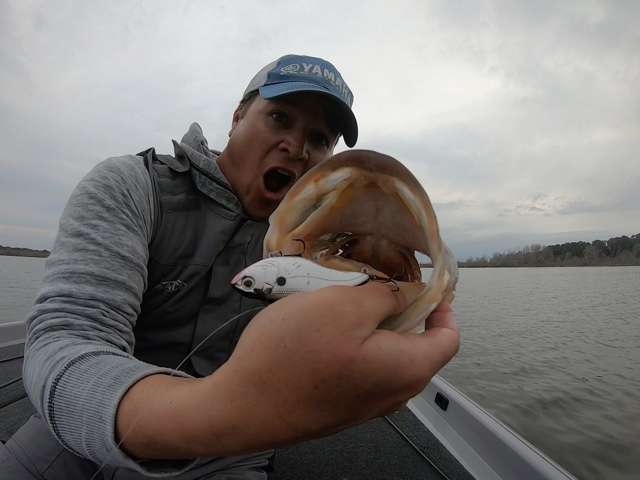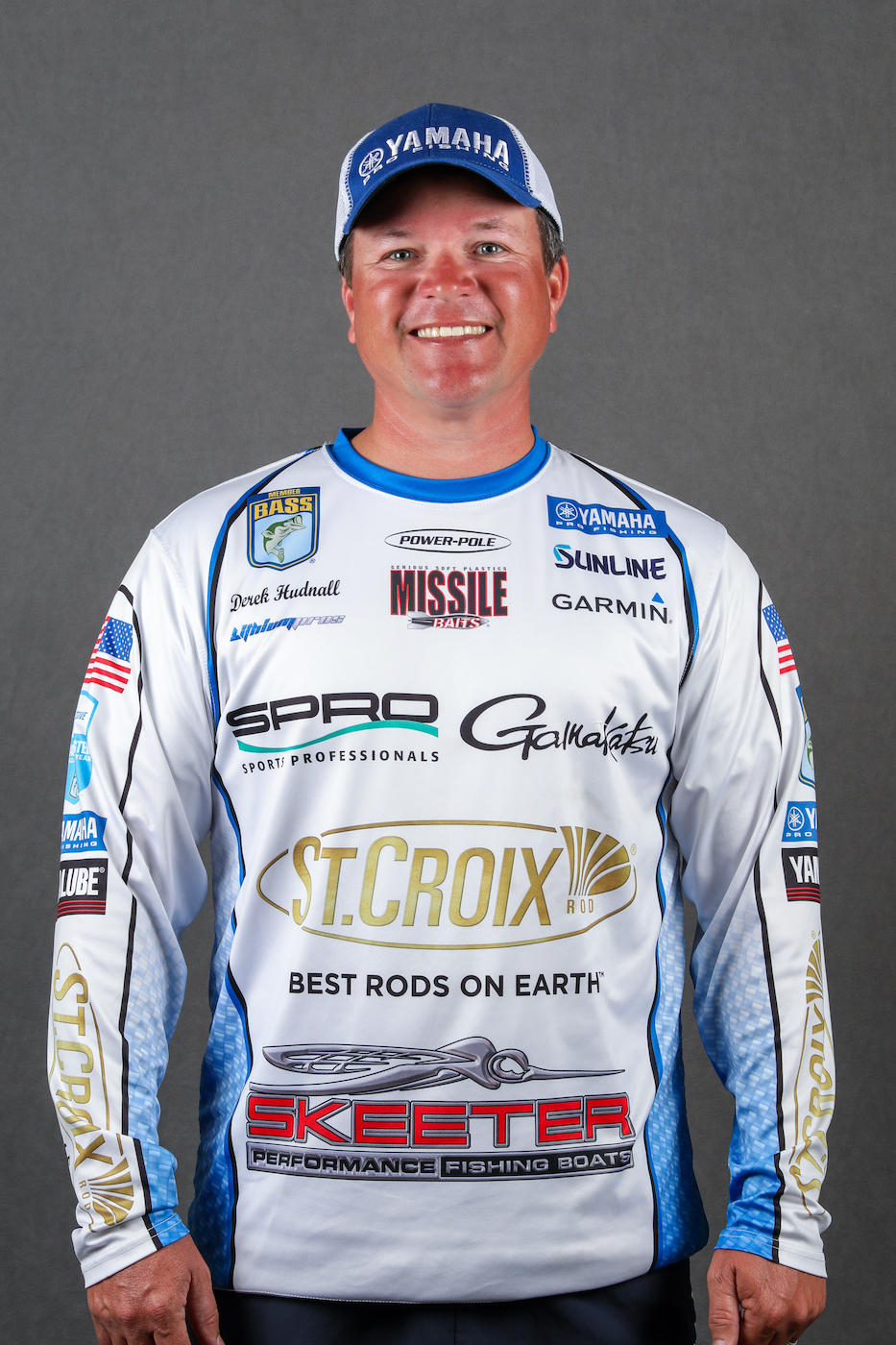
Winter bass fishing can get tough regardless of whether you’re in the South or in the North. Yet, there’s one bait that’ll often get them going no matter where you’re fishing — a lipless crankbait.
In the South, I’m looking for submerged vegetation along the edges of the deepest water I can find. There’s usually vegetation around that’s still green down here even in the winter. I typically make long casts and let the bait settle down into the grass. Then I rip it up out of the grass as fast and as hard as I possibly can.
When I say rip it up I mean straight up. I do not want it coming out of the vegetation at an angle. This is a pure reaction bite. They aren’t eating. They’re attacking.
Up north I do things differently. To begin with I’m looking for chunk rock — the bigger, the better. I also want a sunny afternoon. The sun hits the rocks, and they hold the heat. Even a little heat draws the bass into those places.
I still make a long cast, but I bring my lure back horizontally making sure I bang it into the rock. Just like down south the fish aren’t actively feeding. It’s about a reaction, and the best way to get that is with a hard deflection.
Lure and tackle choices are critical when you’re winter bass fishing with a lipless crankbait.
My lure preference is a Spro Aruku Shad. They come in three sizes, but I mostly fish two, the 65 and the 75. If the water is less than 5 feet deep, I fish with the 65. When it’s deeper than that I go with the 75. When the bite is shad oriented, I choose a chrome with a black back. If it’s crayfish oriented, I go with red.
In the South, down in vegetation, I throw my lipless crankbait with a 7-foot,1-inch medium-heavy rod with an extra-fast tip when I’m making short, accurate casts. I want the backbone to handle a lure down in the grass and a fast tip to help me get my lure up straight and quick. When I’m making longer casts, I go with a longer 7-foot, 4-inch rod with a heavy action and a fast tip.
When I’m up north I’m fishing my Aruku more like a conventional crankbait. Nevertheless I make my rod choices the same way. I know those rods aren’t the conventional crankbait rods, but they are the ones that work the best for me.
My personal rod preference is a St Croix Legend Xtreme. They have both of the rods in that series that I’ve described. If you’d rather fish with a glass rod, I would recommend a couple from St. Croix’s Legend Glass Crankbait Casting Rods series. They have a 7-foot, 2-inch medium with a moderate tip and a 7-foot, 4-inch medium-heavy with a moderate tip.
As far as my reel and my line is concerned, I start with a higher-speed reel. Something around 7.3:1 is good. I want the speed to help me control my bait and to get everything moving forward when that’s necessary. I spool it with 15- or 17-pound-test fluorocarbon line. Fluorocarbon is tough enough to hold up in the vegetation and the rock, and its low stretch keeps me in contact with my lure and what it’s doing.
What I’ve described is a simple, single-shot approach to catching bass this winter. It isn’t a solution to all of the slow bite days we’ll face this winter, but it’s a darn good place to start.





